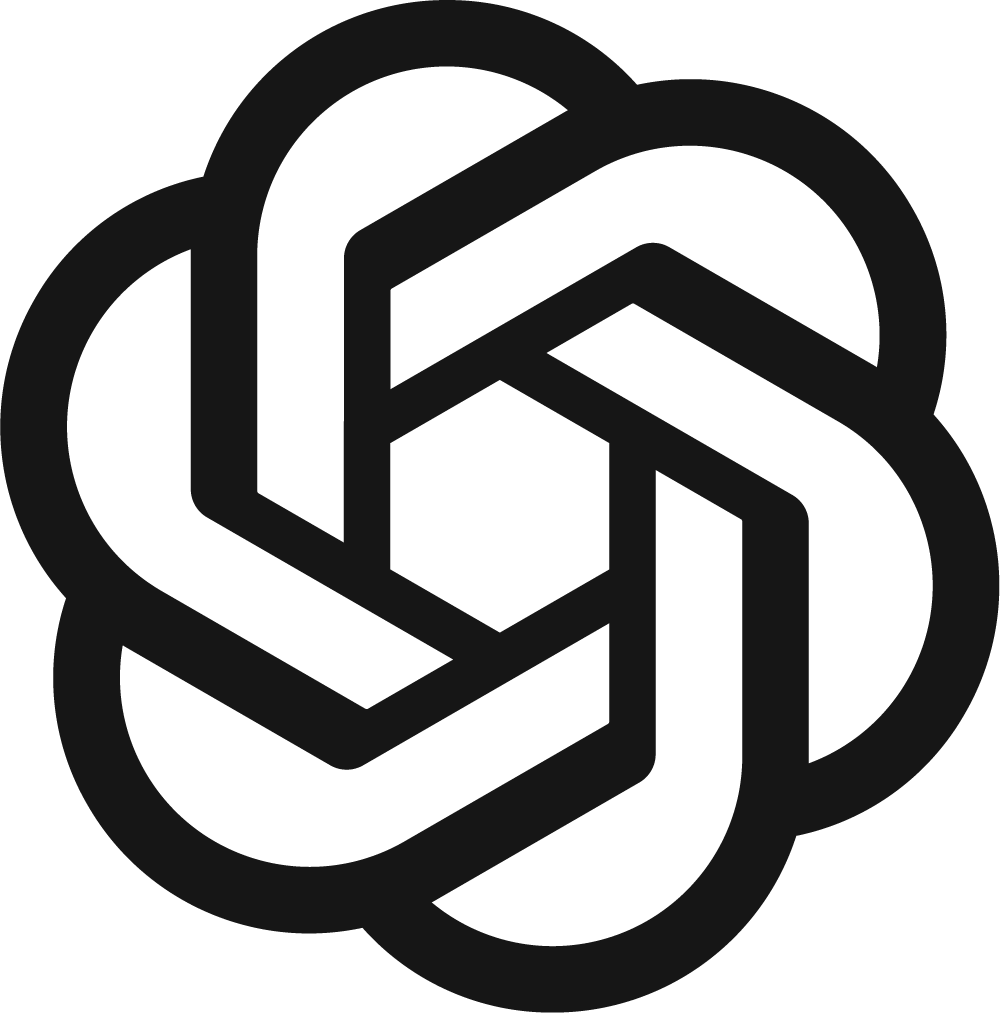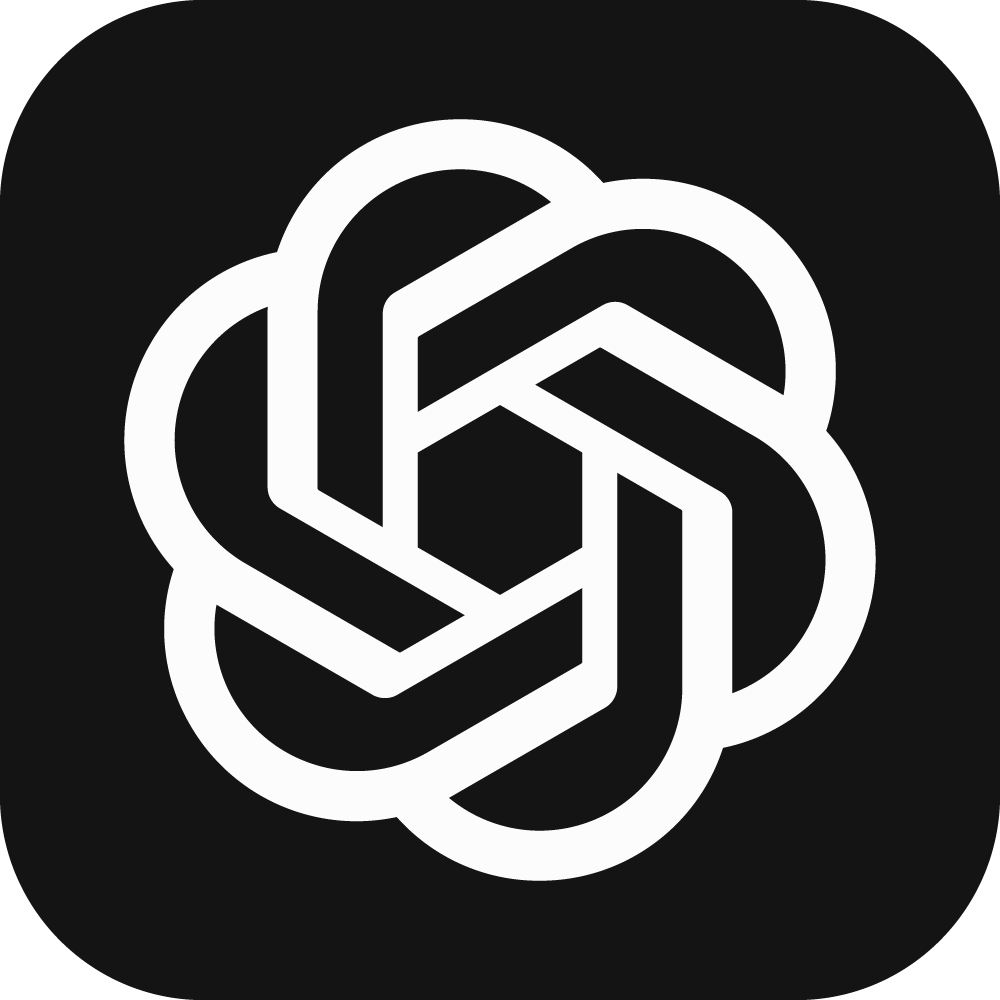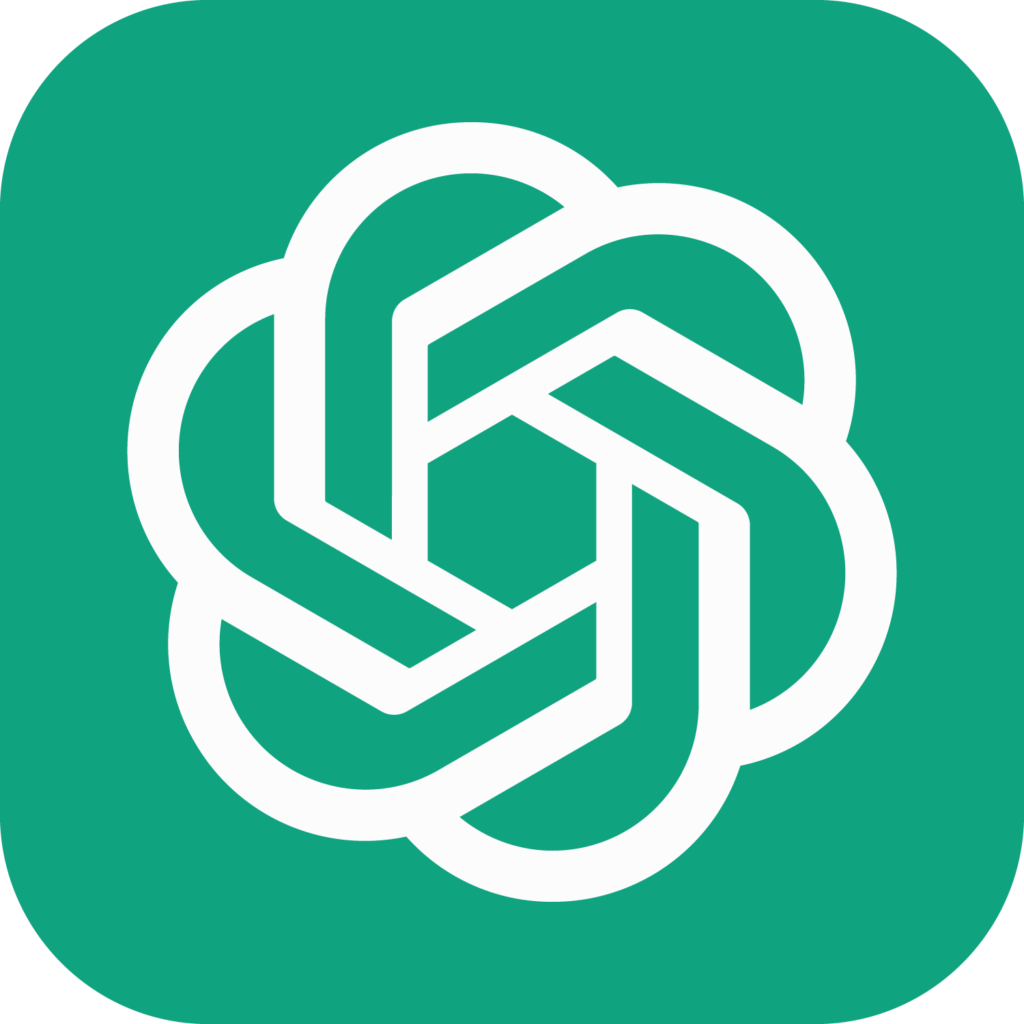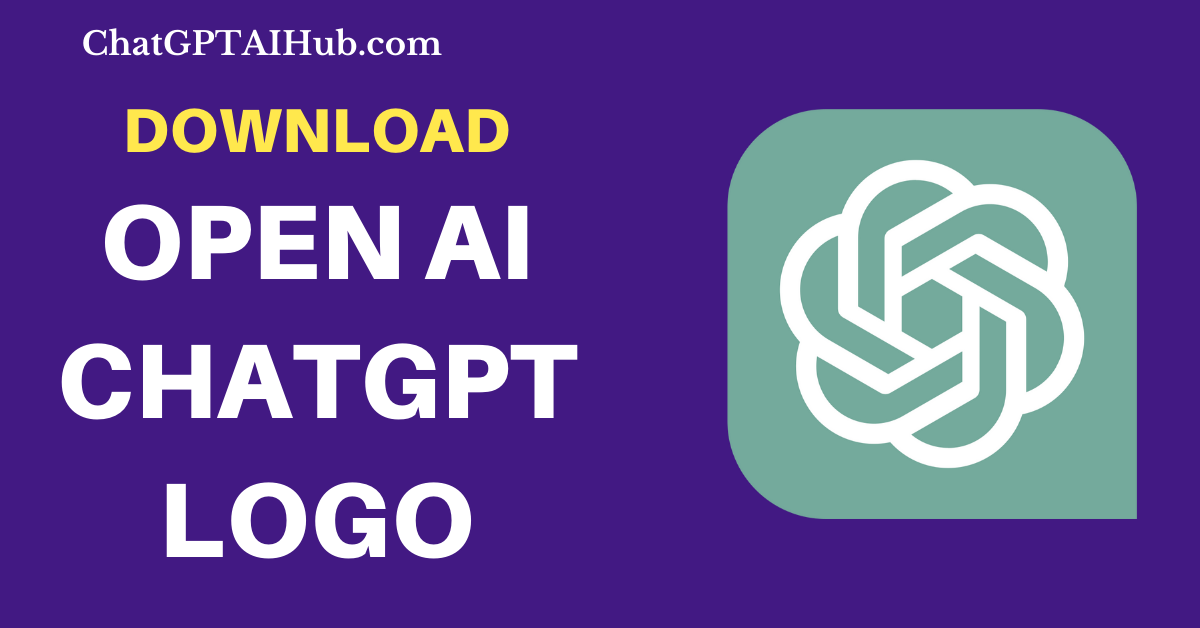Are you in search of the ideal OpenAI ChatGPT logo that truly reflects the brand’s essence? Your search ends here! This blog post offers a curated collection of official ChatGPT logos. These logos have selected to encompass the various use cases for applying the ChatGPT Logos.
The Challenge: Finding the Perfect ChatGPT Logo
Selecting the perfect OpenAI logo can seem like a challenging undertaking. The multitude of choices can lead to feelings of confusion and uncertainty regarding which logo best represents the brand identity, especially when it comes to using it against different backgrounds and adhering to the terms of use of the ChatGPT Trademarks. The absence of direction and resources can result in a sense of being at a standstill and feeling disheartened. However, do not worry! In the upcoming section, we will provide a carefully chosen ChatGPT logos to ease your logo selection concerns and assist you in making a decisive selection.
If you are also looking for ChatGPT Prompts please see our ChatGPT Prompts Directory. To Get Free prompts go to 10000+ ChatGPT prompts Directory
Different ChatGPT OpenAI logos are given below. Download Now.
ChatGPT OpenAI Logo With Color Background

- Image Name: ChatGPT OpenAI logo with Color
- Background Image Format: PNG Image
- Color Code (logo): #fcfcfc
- Image Color Code (Background): #10a37f
- Image RGB Codes (logo): rgba(252,252,252,255)
- Image RGB Codes (Background): rgba(16,163,127,255)
- Image Dimensions: 1500×1500
- Image Type: Brand
ChatGPT OpenAI Logo With Transparent Background

- Image Name: ChatGPT logo with Transparent Background
- Background Image Format: PNG Image
- Color Code (logo): #161616
- Image Color Code (Background): Transparent
- Image RGB Codes (logo): rgba(22,22,22,255)
- Image RGB Codes (Background): Transparent
- Image Dimensions: 1000×1013
- Image Type: Brand
ChatGPT Logo without Background Features ChatGPT

- Image Name: ChatGPT Logo Without Background Features ChatGPT
- Background Image Format: PNG Image
- Color Code (logo): #000000
- Image Color Code (Background): Transparent
- Image RGB Codes (logo): rgba(0,0,0,255)
- Image RGB Codes (Background): Transparent
- Image Dimensions: 2000×588
- Image Type: Brand
ChatGPT logo With Color Background and features ChatGPT Name

- Image Name: ChatGPT logo With color Background and features ChatGPT Name
- Background Image Format: PNG Image
- Color Code (logo): #ffffff
- Image Color Code (Background): #10a37f
- Image RGB Codes (logo): rgba(255,255,255,255)
- Image RGB Codes (Background): rgba(16,163,127,255)
- Image Feature Word Color Code: #070a09
- Image Feature Word RGB Code: rgba(7,10,9,255)
- Image Dimensions: 2000×588
- Image Type: Brand
ChatGPT Logo with Black Background

- Image Name: ChatGPT Logo with Black Background
- Background Image Format: PNG Image
- Color Code (logo): #fcfcfc
- Image Color Code (Background): #141414
- Image RGB Codes (logo): rgba(252,252,252,255)
- Image RGB Codes (Background): rgba(20,20,20,255)
- Image Dimensions: 1000×1000
- Image Type: Brand
ChatGPT logo With embedded color

- Image Name: ChatGPT logo With embedded color
- Background Image Format: PNG Image
- Color Code (logo): #73e5ed
- Image Color Code (Background): #3db6aa
- Image RGB Codes (logo): rgba(252,252,252,255)
- Image RGB Codes (Background): rgba(61,182,170,255)
- Image Dimensions: 1200×675
- Image Type: Brand






Download Logos
Usage Guidelines from OpenAI ( Source: https://openai.com/brand )
Best practices when using our badge
- Use the outlined badge version whenever possible. The filled badge version should be used when placed over a background image and when legibility is a concern.
- Use enough space around the badge—at least the size of the OpenAI logo that appears in the badge.
- Use at a minimum badge height of 32px.
- Don’t modify the badge in any way.
- Don’t translate the badge. In the future, we may provide translated versions for use directly.
Language
If you are an active OpenAI API customer, please draw from the following language to accurately describe your company or product’s development on our APIs in any text. This language can be used for product UI, promotional and press materials, and App Store descriptions.
Please use descriptive phrases that make it clear your product is developed on OpenAI technology (“powered by” is preferred, but “built on” can also be used). Avoid phrases that imply an official partnership with OpenAI (“built with” “developed with” “partnered with”).
Your company or product name should appear first, followed by OpenAI or the model.
Do:
- Meowlytics powered by OpenAI
- Meowlytics built on OpenAI
- Meowlytics developed on OpenAI
Don’t:
- Meowlytics with GPT-4
- Meowlytics AI by OpenAI
- ChatGPT for Meowlytics
Models
If you must refer to specific models, please use the proper model names or date-based versions of models when referring to OpenAI models.
We do not permit the use of OpenAI models or “GPT” in product or app names because it confuses end users.
Do:
- Identify and refer to the appropriate model names: GPT-3, GPT-4, DALL·E 3
- Refer to date-based versions of models if needed: GPT-4 Nov 6 version
- Use “powered by OpenAI” when referring generally to OpenAI models
Don’t:
- Use OpenAI models in product or app names: GPT4Meow, MeowGPT
- Use model names incorrectly: Chat GPT, ChatGPT4, GPTChat
- Don’t use the model classes: Ada, Babbage, Curie, Davinci, GPT-3.5-turbo
- Don’t use specific names: text-davinci-003
- Use “GPT” generically without identifying the specific model: GPT-powered
Powered by OpenAI. A general, simplified way to describe products that are built on OpenAI models or multiple OpenAI models. Where possible, we recommend and prefer that you use the “Powered by OpenAI” badge provided above. Please do not say “powered by ChatGPT” or “built with ChatGPT” to refer to products built with our APIs.
Notifying users. If your product closely resembles an OpenAI product (such as ChatGPT), please make a clear indication to users that your product is independently developed and not affiliated, endorsed, or sponsored by OpenAI. Please consider your use of OpenAI’s product names, your own product copy, surrounding copy (e.g., app description), and any/all other attributes in this regard. It should be clear to your users that your application is separate and distinct from OpenAI’s own products and services.
GPTs in ChatGPT
GPTs—custom versions of ChatGPT that you can create for a specific purpose with instructions, expanded knowledge, and custom actions—are available to ChatGPT users.
GPTs should have a short name appropriate for display in ChatGPT’s sidebar. Choose a name appropriate for an app or service, not the title of a document or video. Having a GPT’s name end with “GPT” is discouraged, but not prohibited.
If the GPT is part of an existing service and provides all or a subset of the same functionality, it’s recommended the GPT be named the same. For example if the service is called “Meowlytics” then the GPT should also be called “Meowlytics”. If instead the GPT is providing support for the service, then consider appending to the name, e.g., “Meowlytics API Helper”.
A GPT may not use another organization’s trademark in its name or logo unless they are authorized to do so. Builders must verify their domain in order to use many common trademarks and OpenAI may reactively enforce this for others if reported. Additionally names referencing public figures, profanity, and harmful topics are prohibited. If a GPT makes use of third-party services, for example as part of its actions, these may be mentioned in the description.
Plugins
When referring to plugins for ChatGPT, please use the term “plugin” rather than other names. Your company or product name should appear first, followed by OpenAI or ChatGPT. Please do not lead with the OpenAI name. (Please note that plugins are evolving into custom actions for GPTs.)
Do:
- BarkBytes plugin for ChatGPT
- BarkBytes ChatGPT plugin
Don’t:
- BarkBytes plugin for OpenAI
- BarkBytes plugin compatible with ChatGPT
- BarkBytes plugin works with ChatGPT
- BarkBytes plugin integrated with ChatGPT
Non-partnerships
OpenAI has official partnerships and specific language about these partnerships, as well as non-partnership language guidance. If you are not an official partner, please don’t use “collaborated with,” “worked with,” or “partnered with,” in any form. Instead, we recommend you use the “Powered by OpenAI” badge provided above.
Do:
- Pawtopia is building on OpenAI
- The Pawtopia product was developed on GPT-4
- Pawtopia is powered by OpenAI
Don’t:
- Pawtopia collaborated with OpenAI
- Pawtopia worked with OpenAI
- Pawtopia partnered with OpenAI
- Pawtopia is building with OpenAI
Content attribution
If publishing text or images generated by an OpenAI model, you are not required to attribute. However, if you’d like to, we encourage you to use the language below.
Do:
- Written with ChatGPT
- Caption written with ChatGPT
- Created with DALL·E
- Image created with DALL·E 3
Don’t:
- Written by ChatGPT
- Caption written by ChatGPT
- Created by DALL·E
- Image created by DALL·E
Press releases
When mentioning our company in your press materials, we ask that you identify OpenAI as an AI research and deployment company. OpenAI’s mission is to create safe and powerful AI that benefits all of humanity.
If your announcement, blog, or other communications go beyond the cases outlined above, or if you have questions about our guidelines, we encourage you to reach out to OpenAI’s Partner Communications team at [email protected].
Usage terms
The term “Marks” includes anything we use to identify our goods or services, including our names, logos, icons, and design elements. By using OpenAI’s Marks, you agree that we own them and that any goodwill generated by your use benefits us. Your permission to use our Marks is limited in the following ways:
- You can only use our Marks as allowed by these brand guidelines.
- The permission we grant is non-exclusive (we can give it to others) and non-transferrable (you cannot give it to others).
- You should not feature our Marks more prominently than your own company’s name or marks.
- We may update the guide, and you must follow changes within a reasonable time.
- We can review your use of our Marks and require changes if needed.
- We may terminate your permission to use our Marks at any time, and you must stop using them promptly.
Please ensure your app follows all OpenAI usage policies. If your project leverages our APIs or models (e.g. GPT-4 or DALL·E 3), we prefer you use the “Powered by OpenAI” badge provided above. You may choose to reference a specific model in your text description, though we typically prefer that you use the general “Powered by OpenAI” wording instead.
We do not permit model names in app titles because there is concern that it confuses end users and it also triggers our enforcement mechanisms. GPTs are custom versions of ChatGPT, so it’s important that you do not reference just GPT in your app descriptions (we do not permit our GPT brand to be used in product names).
Conclusion
To sum up, if you’re searching for the ideal logo for ChatGPT, there’s no need to search beyond our carefully chosen assortment. These logos are crafted to encapsulate your brand’s core identity and showcase the state-of-the-art potential of ChatGPT. With our thoughtfully curated options, you’ll have the support and tools necessary to confidently choose a logo. Delve into the selection and enhance your brand identity with top-notch logo choices that will truly resonate with your audience. Embrace originality and personalization with ChatGPT Open AI logos that eloquently convey your brand’s essence.
ChatGPT Terms, Copyright & Trademarks
The “OpenAI” name, the OpenAI logo, the “ChatGPT” and “GPT” brands, and other OpenAI trademarks, are property of OpenAI. These guidelines are intended to help our partners, resellers, customers, developers, consultants, publishers, and any other third parties understand how to use and display our trademarks and copyrighted work in their own assets and materials.
By using their logos, you agree to ChatGPT Marks usage terms.


